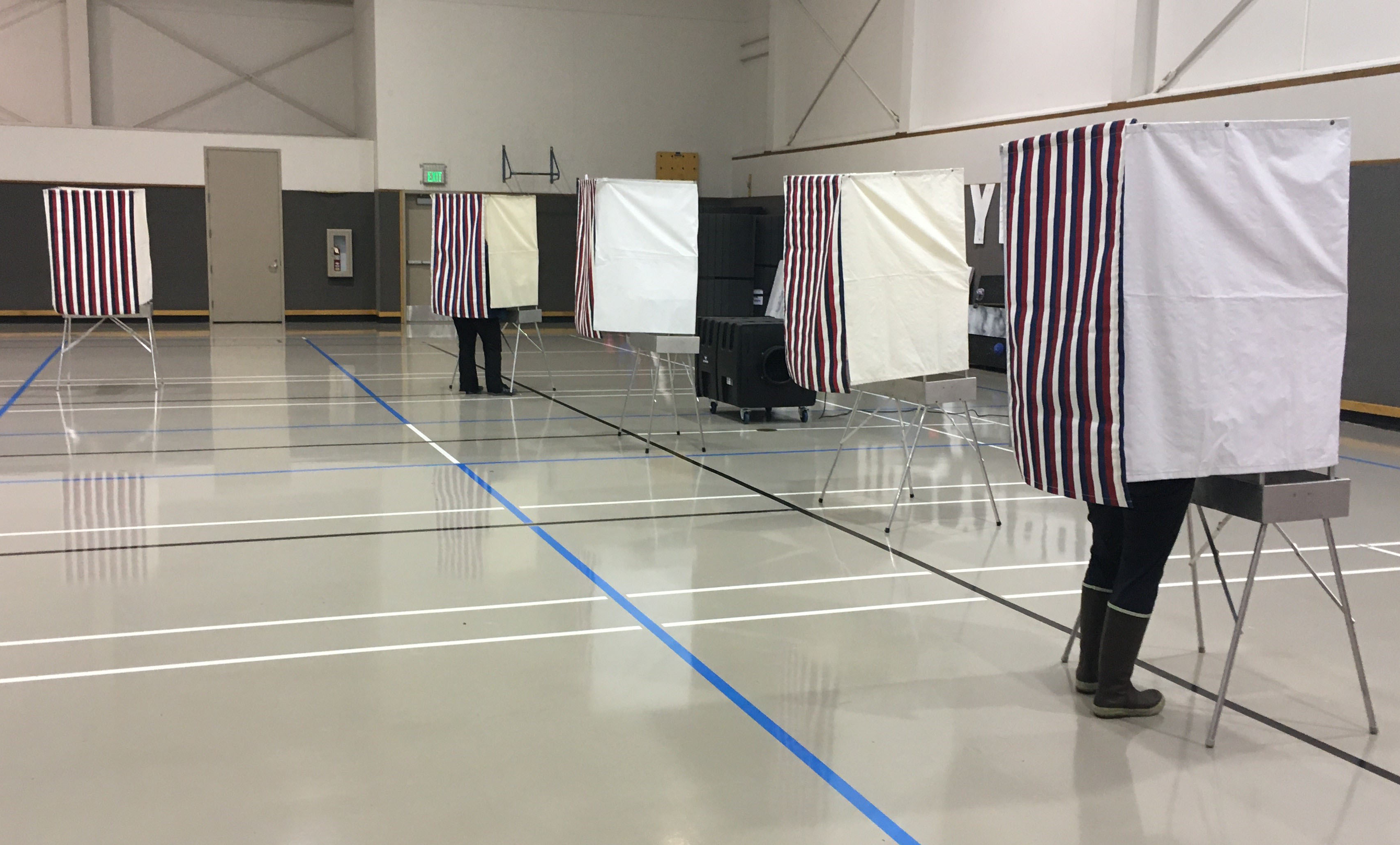
Alaska is the last state in the country to begin to count absentee ballots, and so the outcome of close races in the state this year likely won’t be known for at least a week after Election Day.
Having a long wait to know the final results of an election isn’t unusual for Alaska. During this year’s primary, for example, the state wasn’t able to reach poll workers in Diomede on election night at all due to phone problems.
But with an absentee vote count that begins later than other states, combined with a record-high number of absentee votes due to COVID-19, the long wait may be particularly noticeable this year.
The New York Times has reported that Alaska is one of only two states that begin counting absentee ballots after Election Day. New York is the other state, and it begins counting absentees three days after the election.
Division of Elections Director Gail Fenumiai recently explained why the weeklong wait is necessary.
“We need to make sure that we have all of the in-person history that’s done from voters who go cast a ballot on Election Day at the polls, to be able to account for any voters who may have voted in person at their polling place and also by mail or voted in another manner. And to do the best to ensure that only one vote for a voter is counted in the general election,” she said.
In 2016 and 2018, the state started counting absentee ballots sooner. That’s because, it relied on a different system back then to ensure voters didn’t vote more than once. Poll workers were notified when voters had requested absentee ballots. If a voter who had requested an absentee ballot tried to vote in person, they were required to vote using a questioned ballot, unless they brought their absentee ballot to the polling place to destroy it. The questioned ballot would only be counted if the voter hadn’t voted absentee.
This year’s approach returns the state to the vote-count schedule it followed before 2016.
Fenumiai said this year has been unique.
“Well, the election in general has been more challenging, because of COVID: finding election workers, doing our best to assure the public that we’re keeping workers and voters safe,” she said. “Of course, having a record number of vote by mail is challenging.”
The vote counts announced on election night in Alaska will only include those cast earlier in the day, as well as nearly 38,000 early votes cast in person by Thursday at one of 10 designated locations.
A state law says state election workers’ counting of absentee ballots “shall begin at 8 p.m., local time, on the day of the election.” Fenumiai didn’t immediately respond to a question about how the state’s absentee vote counting schedule is in keeping with the law.
It’s not yet clear how many votes will be counted after Election Day. But it will be a large amount, including nearly 90,000 absentee votes the state reported through Friday morning.
In the primary in August, 40% of all votes were counted later. And it could be a similar share in the general election, based on the number of absentee ballots that could still be returned and the number of early and questioned ballots cast in previous elections.
In the primary, seven communities voted entirely by absentee ballot when poll workers weren’t available at the last minute due to COVID-19. And some voters in Mertarvik weren’t able to vote at all.
Fenumiai said on Oct. 19 that the division was aiming to have a polling place open in each precinct, though she was talking with communities that faced COVID-19 outbreaks.
“We are in daily contact with our chairpeople and the local leaders there to see … how they think things are going,” she said.
And she said that in-person absentee ballots would be available in Mertarvik, as well as a polling place open in nearby Newtok.
The timeline for updates on vote counts after the absentee counting has begun isn’t clear. The division has until Nov. 18 to complete the count. Absentee ballots that are postmarked by Election Day will be accepted until Nov. 13 for those mailed inside Alaska and until Nov. 18 for overseas ballots. Since the postal service forwards mail from around the state to be postmarked in Anchorage, Alaskans who still plan to mail in their ballot should ask a postal clerk to postmark it.
Another thing to keep in mind on election night: When the Division of Elections reports that precincts have reported their results, those results won’t include the absentee votes and others that won’t be counted that week. So, when, say, 99% of precincts have reported, that doesn’t mean that 99% of the votes have been counted.
Fenumiai emphasized one last point: All results are unofficial until the votes are certified. The target for that is Nov. 25.
